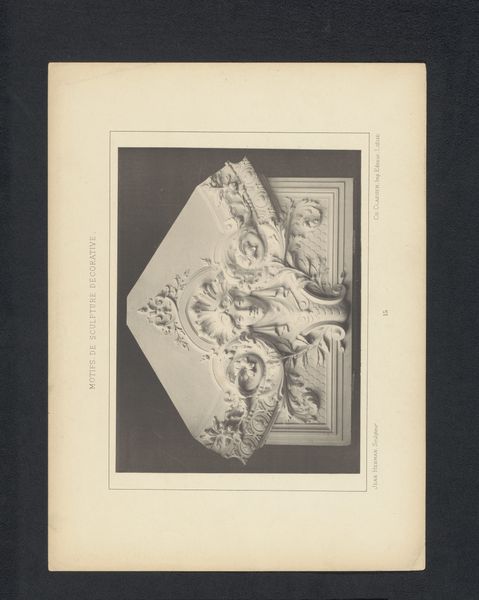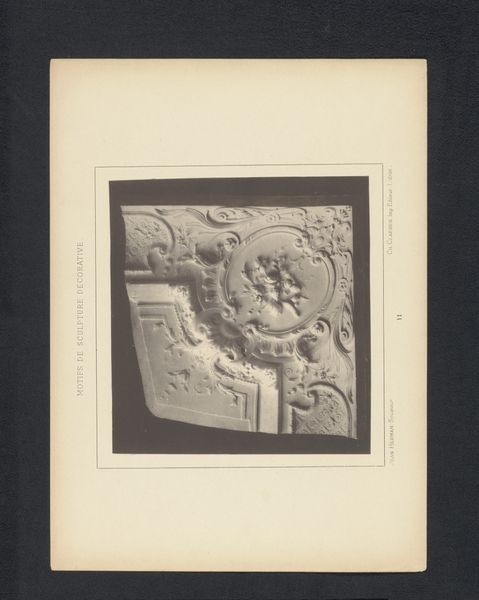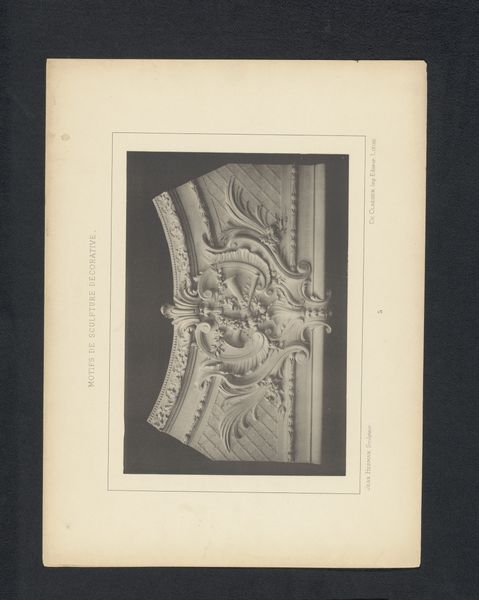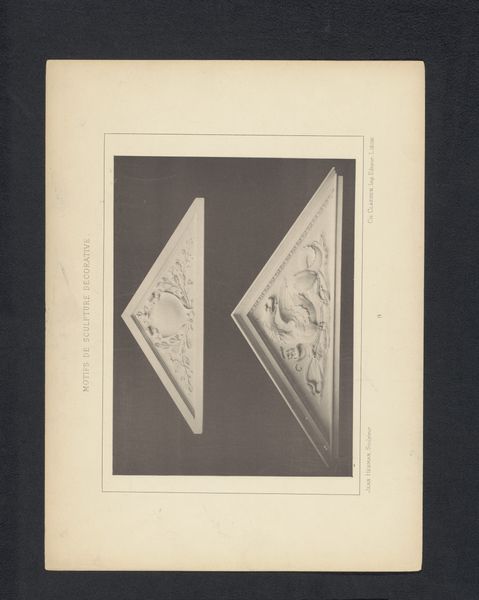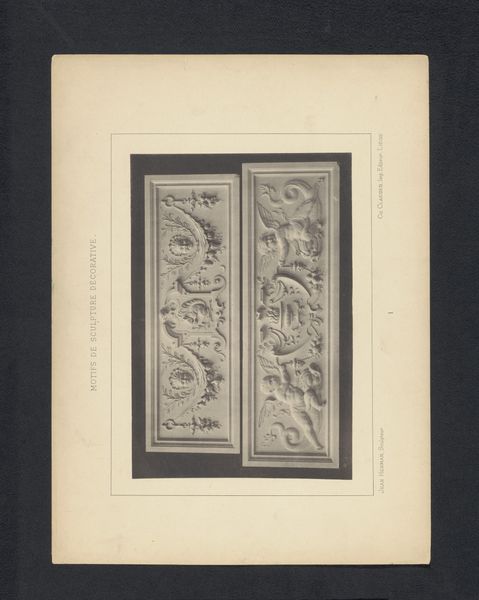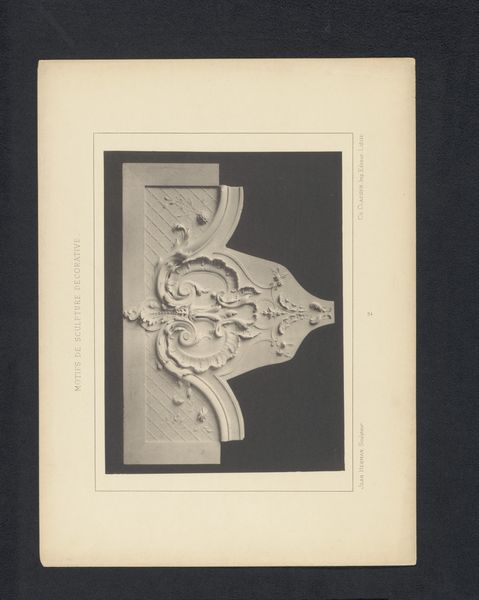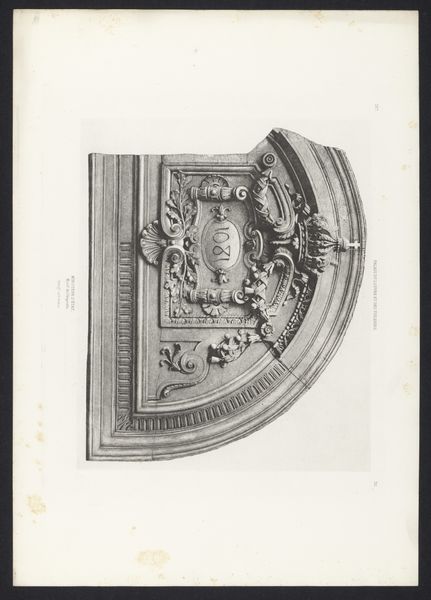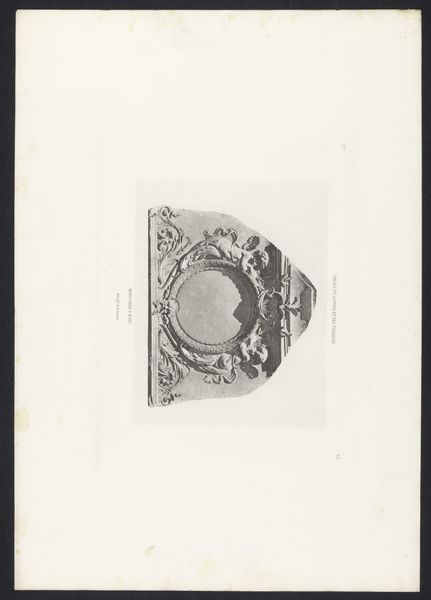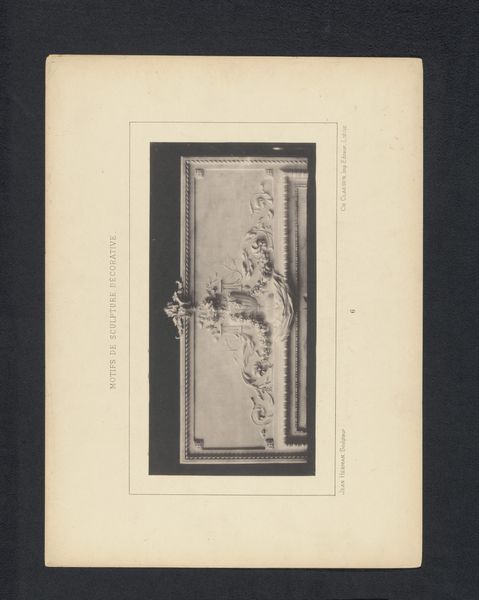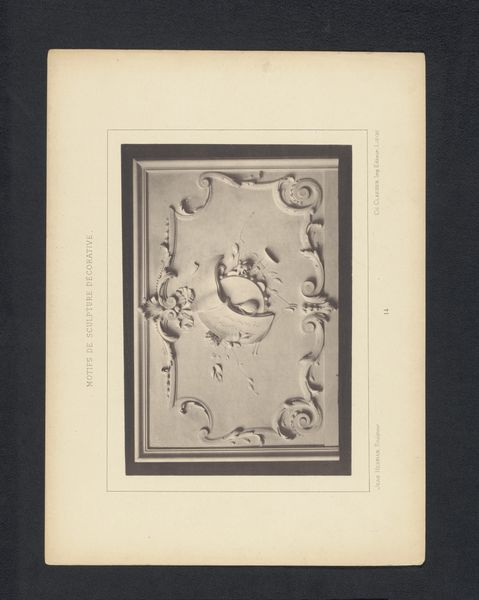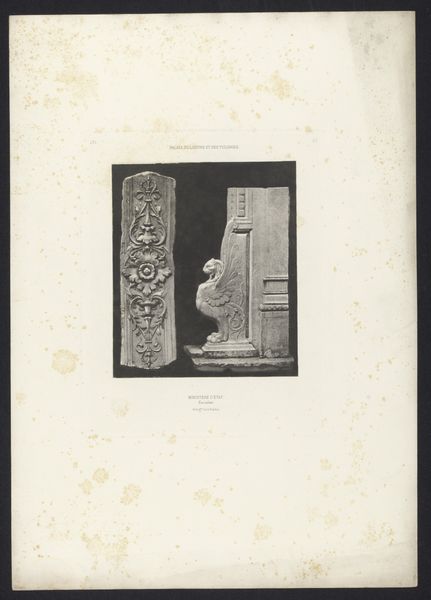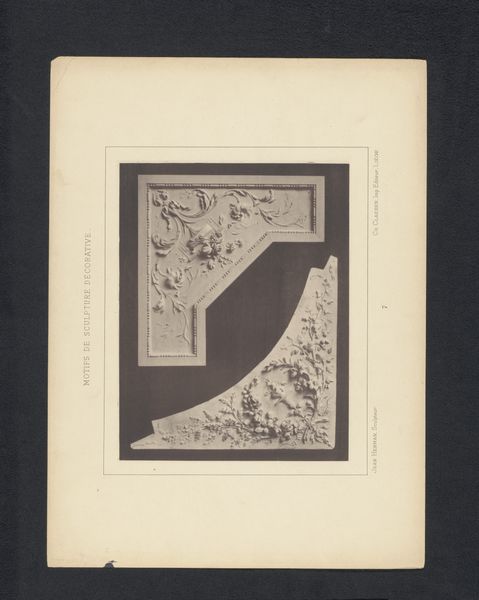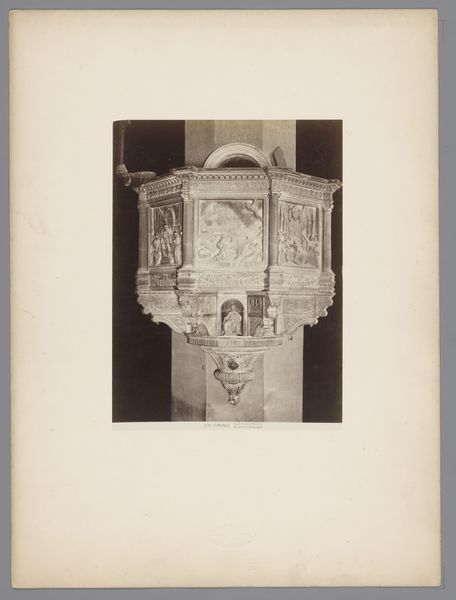
Drie reliëfs met fruit, bladranken en speerpunten, gebeeldhouwd door Jean Herman before 1880
0:00
0:00
Dimensions: height 206 mm, width 263 mm
Copyright: Rijks Museum: Open Domain
Curator: This printed work showcases three reliefs with fruit, foliage, and spearheads sculpted by Jean Herman sometime before 1880. The arrangement immediately gives me the impression of an architectural study or even a design proposal. What do you think? Editor: It does have a cool, almost clinical aesthetic, doesn’t it? These precise arrangements, along with the monochrome, feel designed to remove any emotional messiness from what would likely be very ornamental elements. I mean, look at that central lunette, pregnant with symbolism both aggressive and fertile! Curator: Precisely! Spears are potent symbols of authority and defence, juxtaposed against fruits and vines that traditionally symbolize abundance, festivity, and divine grace. There’s a delicate tension there. Could it be that the artist, Herman, was exploring ideas of a society that has both the force to protect itself and the means to thrive? Editor: It's certainly worth considering the societal function of such decorative motifs, which were often intended to communicate wealth and taste but also to visually encode a sense of inherited cultural authority. Look at the strategic placement of an empty frame at the center of that relief. A deliberate statement about who belongs and who’s left out of these carefully-crafted idylls, perhaps? Curator: Or perhaps more straightforwardly, an invitation for a patron's coat of arms? Still, I agree that these recurring emblems reinforce cultural memory and affirm hierarchical structures. Note the almost classical treatment of the foliage; this isn't mere decoration. Editor: I keep returning to how cool the composition is. Despite these classical motifs, these feel incredibly staged and carefully arranged. This calculated aesthetic invites us to really reflect on these items, but almost, from arm’s length, a deliberate and slightly subversive choice! Curator: Subversive indeed. These stylized forms reflect their period, revealing both the beauty and tensions present in 19th-century academic and decorative art. I am left wondering how these classical tropes can exist harmoniously in our modern-day dialogue. Editor: The question is whether these objects should exist harmoniously today. Perhaps more productive to explore ways we might reinterpret their inherited symbolism through contemporary critique and reclaim a new symbolism for ourselves.
Comments
No comments
Be the first to comment and join the conversation on the ultimate creative platform.
